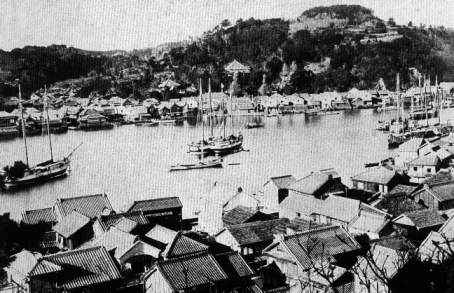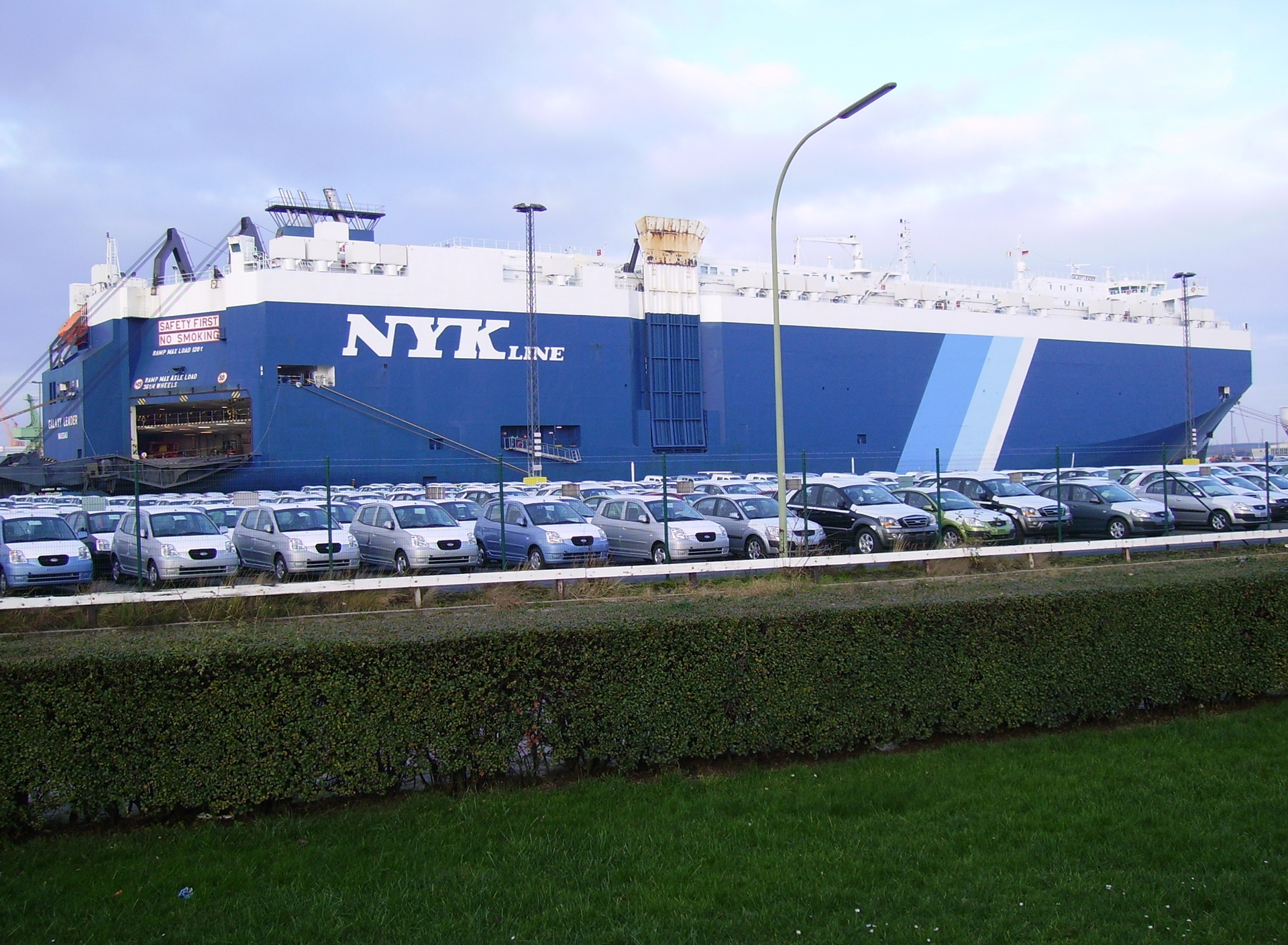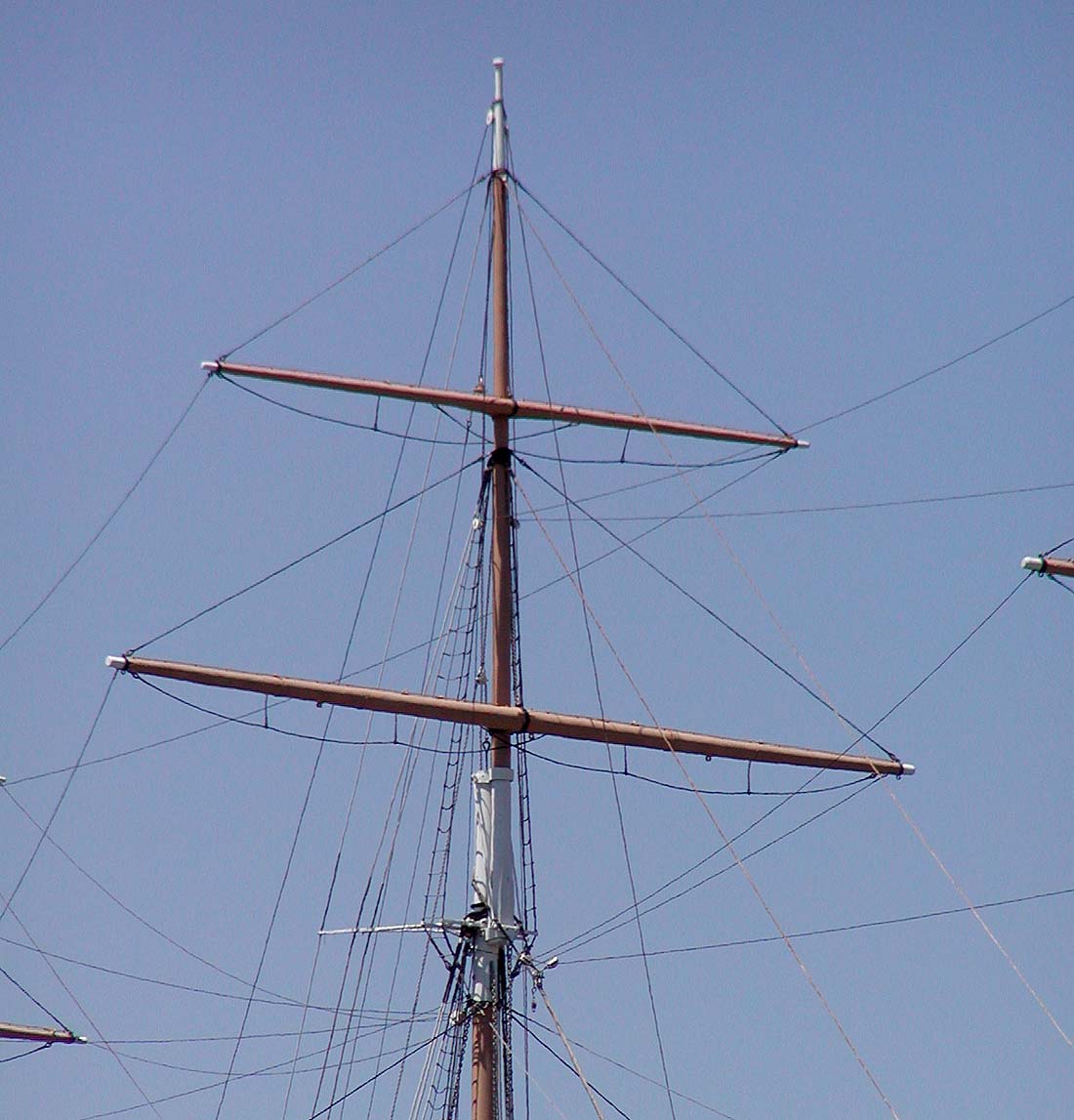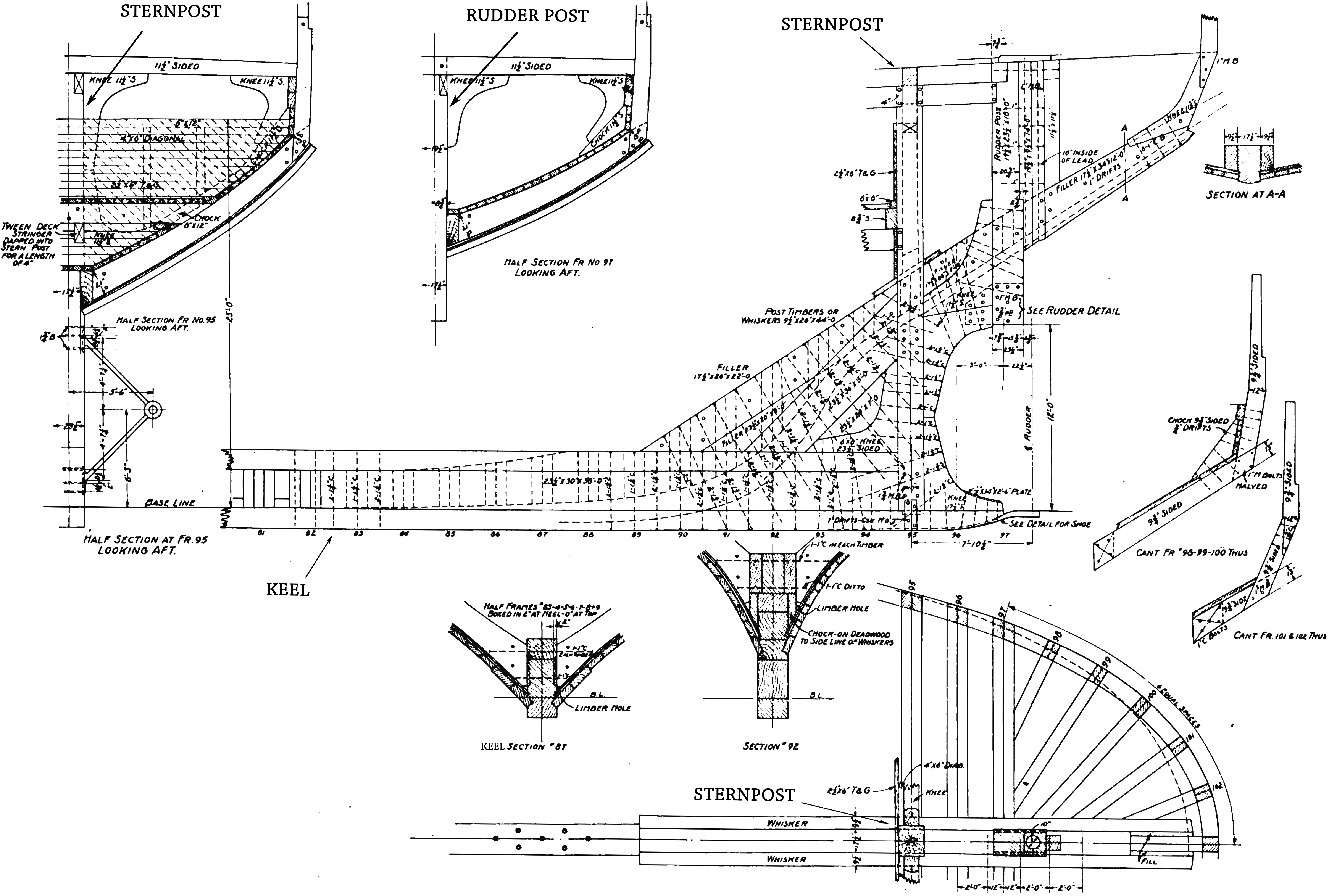|
Eastern Sword
''Eastern Sword'' was an unarmed 3,785-ton steam merchant ship that was completed in 1920 at the Uraga Dry Dock Co. Ltd, Uraga, Japan. She was owned by the Sword Line Inc., New York, New York, and she was homeported out of this same city. The vessel was torpedoed and sunk on 4 May 1942 by the about off the Georgetown Light, Trinidad. 13 of the 38 crew survived. Description ''Eastern Sword'' was a steam-powered merchant ship that measured , was long between perpendiculars with a beam of . The vessel was powered by a triple expansion steam engine turning one propeller and had a maximum speed of . The vessel was constructed by the Uraga Dry Dock Co. Ltd in Uraga, Japan with the yard number 166 and completed in August 1920. The ship was constructed on behalf of the United States Government and acquired by the Sword Steam Ship Line Inc. in 1931. ''Eastern Sword'' was registered in New York, New York. Sinking ''Eastern Sword'', operated by Alcoa Steamship Company, departed New ... [...More Info...] [...Related Items...] OR: [Wikipedia] [Google] [Baidu] |
Uraga, Kanagawa
is a subdivision of the city of Yokosuka, Kanagawa Prefecture, Japan. It is located on the south eastern side of the Miura Peninsula, at the northern end of the Uraga Channel, at the entrance of Tokyo Bay. History With the establishment of the Tokugawa shogunate based in Edo at the start of the 17th century, the small village of Uraga developed rapidly due to its sheltered harbor and strategic location at the entrance of Edo Bay. The area was ''tenryō'' territory under direct control of the shogunate, and the increase in maritime traffic led to the development of merchant and trading firms in the area. In 1720, the shogunate established the post of '' Uraga bugyō'', whose responsibility was to police traffic and to organize coastal defenses, and the entrances to the harbor were fortified with cannon against possible incursions by foreign ships in violation of Japan’s national isolation policy. Still, in 1812, the British whaler stopped at Uraga and took on water, food, ... [...More Info...] [...Related Items...] OR: [Wikipedia] [Google] [Baidu] |
Bauxite
Bauxite () is a sedimentary rock with a relatively high aluminium content. It is the world's main source of aluminium and gallium. Bauxite consists mostly of the aluminium minerals gibbsite (), boehmite (γ-AlO(OH)), and diaspore (α-AlO(OH)), Mixture, mixed with the two iron oxides goethite (FeO(OH)) and haematite (), the aluminium Clay minerals, clay mineral kaolinite () and small amounts of anatase () and ilmenite ( or ). Bauxite appears dull in Lustre (mineralogy), luster and is reddish-brown, white, or tan. In 1821, the French people, French geologist Pierre Berthier discovered bauxite near the village of Les Baux-de-Provence, Les Baux in Provence, southern France. Formation Numerous classification schemes have been proposed for bauxite but, , there was no consensus. Vadász (1951) distinguished Laterite, lateritic bauxites (silicate bauxites) from karst bauxite ores (carbonate bauxites): * The carbonate bauxites occur predominantly in Europe, Guyana, Suriname, and ... [...More Info...] [...Related Items...] OR: [Wikipedia] [Google] [Baidu] |
1920 Ships
Nineteen or 19 may refer to: * 19 (number) * One of the years 19 BC, AD 19, 1919, 2019 Films * ''19'' (film), a 2001 Japanese film * ''Nineteen'' (1987 film), a 1987 science fiction film * ''19-Nineteen'', a 2009 South Korean film * ''Diciannove'', a 2024 Italian drama film informally referred to as "Nineteen" in some sources Science * Potassium, an alkali metal * 19 Fortuna, an asteroid Music * 19 (band), a Japanese pop music duo Albums * ''19'' (Adele album), 2008 * ''19'', a 2003 album by Alsou * ''19'', a 2006 album by Evan Yo * ''19'', a 2018 album by MHD * ''19'', one half of the double album ''63/19'' by Kool A.D. * ''Number Nineteen'', a 1971 album by American jazz pianist Mal Waldron * ''XIX'' (EP), a 2019 EP by 1the9 Songs * "19" (song), a 1985 song by British musician Paul Hardcastle * "Stone in Focus", officially "#19", a composition by Aphex Twin * "Nineteen", a song from the 1992 album ''Refugee'' by Bad4Good * "Nineteen", a song from the 2001 al ... [...More Info...] [...Related Items...] OR: [Wikipedia] [Google] [Baidu] |
Ships Built By Uraga Dock Company
A ship is a large vessel that travels the world's oceans and other navigable waterways, carrying cargo or passengers, or in support of specialized missions, such as defense, research and fishing. Ships are generally distinguished from boats, based on size, shape, load capacity and purpose. Ships have supported exploration, trade, warfare, migration, colonization, and science. Ship transport is responsible for the largest portion of world commerce. The word ''ship'' has meant, depending on the era and the context, either just a large vessel or specifically a ship-rigged sailing ship with three or more masts, each of which is square-rigged. The earliest historical evidence of boats is found in Egypt during the 4th millennium BCE. In 2024, ships had a global cargo capacity of 2.4 billion tons, with the three largest classes being ships carrying dry bulk (43%), oil tankers (28%) and container ships (14%). Nomenclature Ships are typically larger than boats, but there is no u ... [...More Info...] [...Related Items...] OR: [Wikipedia] [Google] [Baidu] |
Maritime Incidents In May 1942
Maritime may refer to: Geography * Maritime Alps, a mountain range in the southwestern part of the Alps * Maritime Region, a region in Togo * Maritime Southeast Asia * The Maritimes, the Canadian provinces of Nova Scotia, New Brunswick, and Prince Edward Island * Maritime County, former county of Poland, existing from 1927 to 1939, and from 1945 to 1951 * Neustadt District, Reichsgau Danzig-West Prussia, known from 1939 to 1942 as ''Maritime District'', a former district of Reichsgau Danzig-West Prussia, Nazi Germany, from 1939 to 1945 * The Maritime Republics, thalassocratic city-states on the Italian peninsula during the Middle Ages Museums * Maritime museum (sometimes nautical museum), a museum for the display of objects relating to ships and travel on large bodies of water. * Maritime Museum (Belize) * Maritime Museum (Macau), China * Maritime Museum (Malaysia) * Maritime Museum (Stockholm), Sweden Music * ''Maritime'' (album), a 2005 album by Minotaur Shock * Maritime (ban ... [...More Info...] [...Related Items...] OR: [Wikipedia] [Google] [Baidu] |
Merchant Ships
A merchant ship, merchant vessel, trading vessel, or merchantman is a watercraft that transports cargo or carries passengers for hire. This is in contrast to pleasure craft, which are used for personal recreation, and naval ships, which are used for military purposes. They come in a myriad of sizes and shapes, from inflatable dive boats in Hawaii, to 5,000-passenger casino vessels on the Mississippi River, to tugboats plying New York Harbor, to oil tankers and container ships at major ports, to passenger-carrying submarines in the Caribbean. Many merchant ships operate under a "flag of convenience" from a country other than the home of the vessel's owners, such as Liberia and Panama, which have more favorable maritime laws than other countries. The Greek merchant marine is the largest in the world. Today, the Greek fleet accounts for some 16 per cent of the world's tonnage; this makes it currently the largest single international merchant fleet in the world, albeit no ... [...More Info...] [...Related Items...] OR: [Wikipedia] [Google] [Baidu] |
Lifeboat (shipboard)
A lifeboat or liferaft is a small, rigid or inflatable boat carried for emergency evacuation in the event of a disaster aboard a ship. Lifeboat drills are required by law on larger commercial ships. Rafts (raft, liferafts) are also used. In the military, a lifeboat may double as a whaleboat, dinghy, or Captain's gig, gig. The ship's tenders of cruise ships often double as lifeboats. Recreational sailors usually carry inflatable liferafts, though a few prefer small proactive lifeboats that are harder to sink and can be sailed to safety. Inflatable lifeboats may be equipped with auto-inflation (carbon dioxide or nitrogen) canisters or mechanical pumps. A quick release and pressure release mechanism is fitted on ships so that the canister or pump automatically inflates the lifeboat, and the lifeboat breaks free of the sinking vessel. Commercial aircraft are also required to carry auto-inflating liferafts in case of an emergency water landing; offshore oil platforms also have life ... [...More Info...] [...Related Items...] OR: [Wikipedia] [Google] [Baidu] |
Radio Shack
RadioShack (formerly written as Radio Shack) is an American electronics retailer that was established in 1921 as an amateur radio mail-order business. Its parent company was purchased by Tandy Corporation in 1962, which shifted its focus from mail-order radio equipment to hobbyist electronics sold at retail. Tandy ended the mail-order business, opened small stores staffed by people who knew electronics, greatly reduced the number of items carried, and replaced name-brand products with private-label items from lower-cost manufacturers. These moves were successful and the brand grew. In the late 1970s, the company branched into personal computers, and in the 1990s, it began to focus on wireless phones and de-emphasize the hobbyist market. RadioShack reached its peak in 1999, when Tandy operated over 8,000 stores in the United States, Mexico, and Canada, and under the Tandy name in The Netherlands, Belgium, Germany, France, the United Kingdom, and Australia. However, its sales strat ... [...More Info...] [...Related Items...] OR: [Wikipedia] [Google] [Baidu] |
Mast (sailing)
The mast of a sailing vessel is a tall spar, or arrangement of spars, erected more or less vertically on the median line of a ship or boat. Its purposes include carrying sails, spars, and derricks, giving necessary height to a navigation light, look-out position, signal yard, control position, radio aerial, or signal lamp. Large ships have several masts, with the size and configuration depending on the style of ship. Nearly all sailing masts are guyed. Until the mid-19th century, all vessels' masts were made of wood formed from a single or several pieces of timber which typically consisted of the trunk of a conifer tree. From the 16th century, vessels were often built of a size requiring masts taller and thicker than from single tree trunks. On these larger vessels, to achieve the required height, the masts were built from up to four sections (also called masts). From lowest to highest, these were called: lower, top, topgallant, and royal masts. Giving the lower section ... [...More Info...] [...Related Items...] OR: [Wikipedia] [Google] [Baidu] |
Keel
The keel is the bottom-most longitudinal structural element of a watercraft, important for stability. On some sailboats, it may have a fluid dynamics, hydrodynamic and counterbalancing purpose as well. The keel laying, laying of the keel is often the initial step in constructing a ship. In the British and American shipbuilding traditions, this event marks the beginning date of a ship's construction. Etymology The word "keel" comes from Old English language, Old English , Old Norse , = "ship" or "keel". It has the distinction of being regarded by some scholars as the first word in the English language recorded in writing, having been recorded by Gildas in his 6th century Latin work ''De Excidio et Conquestu Britanniae'', under the spelling ''cyulae'' (he was referring to the three ships that the Saxons first arrived in). is the Latin word for "keel" and is the origin of the term careening, careen (to clean a keel and the hull in general, often by rolling the ship on its side). An ... [...More Info...] [...Related Items...] OR: [Wikipedia] [Google] [Baidu] |
Stern
The stern is the back or aft-most part of a ship or boat, technically defined as the area built up over the sternpost, extending upwards from the counter rail to the taffrail. The stern lies opposite the bow, the foremost part of a ship. Originally, the term only referred to the aft port section of the ship, but eventually came to refer to the entire back of a vessel. The stern end of a ship is indicated with a white navigation light at night. Sterns on European and American wooden sailing ships began with two principal forms: the ''square'' or ''transom'' stern and the ''elliptical'', ''fantail'', or ''merchant'' stern, and were developed in that order. The hull sections of a sailing ship located before the stern were composed of a series of U-shaped rib-like frames set in a sloped or "cant" arrangement, with the last frame before the stern being called the ''fashion timber(s)'' or ''fashion piece(s)'', so called for "fashioning" the after part of the ship. This frame i ... [...More Info...] [...Related Items...] OR: [Wikipedia] [Google] [Baidu] |
Hold (compartment)
image:Hold of a container ship.jpg, 120px, View of the hold of a container ship A ship's hold or cargo hold is a space for carrying cargo in a ship or airplane Compartment (ship), compartment. Description Cargo in holds may be either packaged in crates, bales, etc., or unpackaged (bulk cargo). Access to holds is by a large hatch at the top. Ships have had holds for centuries; an alternative way to carry cargo is in standardized Intermodal container, shipping containers, which may be loaded into appropriate holds or carried on deck. Holds in older ships were below the orlop deck, the lower part of the interior of a ship's hull (watercraft), hull, especially when considered as storage space, as for cargo. In later merchant vessels it extended up through the decks to the underside of the weather deck. Some ships have built in Crane (machine), cranes and can load and unload their own cargo. Other ships must have Dock (maritime), dock side cranes or gantry cranes to load and unload. ... [...More Info...] [...Related Items...] OR: [Wikipedia] [Google] [Baidu] |







